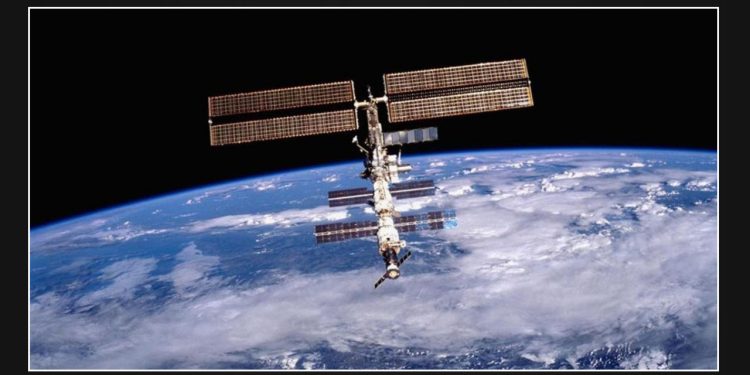In the video provided above, you can catch a glimpse of the International Space Station (ISS) as it was spotted from Northeast Ohio back in September.
According to Stacker, NASA made a chilling discovery aboard the International Space Station: 13 strains of a multidrug-resistant bacterium known as Enterobacter bugandensis. This superbug is something straight out of a sci-fi horror story and has raised concerns about the potential risks of bacteria in space.
Enterobacter Bugandensis
This Article Includes
The label may not be easy to pronounce, but the bug is a serious concern. Due to its mutation in the highly unusual and isolated atmosphere of outer space, this microscopic anomaly has developed genetic variations that make it resistant to drugs. This sets it apart from its counterparts on Earth.
To put it simply, the mega bug’s presence and extraordinary ability to withstand medication designed for Earth pose a significant health threat to astronauts.
A collaborative study between IIT Madras and NASA delved into the prevalence, distribution, colonization patterns, and adaptations of the superbug E. bugandensis.
Straight Out Of A Sci-Fi Or Horror Flick
The space microbe thrived within the space station’s deeply embedded and relatively untouched systems, almost like an antagonist in a John Carpenter movie or the Hunter Seeker robo-wasp in Dune: Part One. Its resilience was largely due to its ability to acquire iron and interact with other organisms.
According to research, the superbug strains possess exceptional genomic variations and antimicrobial capabilities that contribute to their impressive resilience. It is worth noting that the adaptations the bacteria acquired in space significantly differ from those present in Earth-bound strains.
Intimidating Adaptations
The bacterium’s impressive ability to survive the harsh conditions of space is captivatingly showcased. What makes this possible is the intricate network of relationships between the mega bug and other microorganisms. The space station is teeming with many such microbial stowaways, all of which contribute to the bacterium’s remarkable resilience.
The growth dynamics of microbes aboard the station are typically benign. However, the space bug diverges from this pattern and poses potential health risks, especially to the respiratory systems of astronauts.
Microbes, such as the superbug, have been present on our planet for a very long time. They are known to adapt and evolve constantly to survive even the harshest conditions, including microgravity. Space is a particularly challenging environment for these microorganisms, and species like E. bugandensis have to undergo genomic changes to survive in such conditions. Failure to do so can result in their demise.
After completing these genomic changes, the bugs become genetically distinct and separate from any other counterparts on Earth.
Astronaut Immunity Is A Concern
The space station is home to a diverse range of microbes, including bacterial and fungal phyla, that have the ability to adapt to extreme conditions and survive. This adaptability has allowed microorganisms like the superbug to reinvent themselves and develop resistance to antibiotics. As a result, it is highly likely that the superbug’s resistance to antibiotics will continue to increase. To address this issue, NASA is committed to conducting ongoing studies and new investigations, with a particular focus on E. bugandensis.
The weakened immune systems of astronauts while on the space station are a cause for concern, particularly with the discovery of the mega bug. This type of bacteria could pose a significant threat to astronauts, especially when in a vulnerable state, potentially leading to illness in an already challenging environment. The limited access to medical facilities in space only compounds the issue.
Earthbound Health Risks?
It’s hard to ignore the potential danger posed by the hardy bacterium present on the space station. The health and safety of those onboard are at risk, and the possibility of a disease caused by the superbug reaching Earth is not entirely impossible, albeit unlikely.
Dr. Kasthuri Venkateswaran from NASA’s Jet Propulsion Laboratory led the research on the superbug, with the added contributions from a joint team consisting of members from JPL and IIT Madras.
Read More:
- DOJ is aiming to recover every penny of COVID relief fraud, amounting to billions in pandemic fraud
- Ohio voter advocates warn that a group is making troubling challenges and are asking the Secretary of State to guide the counties

